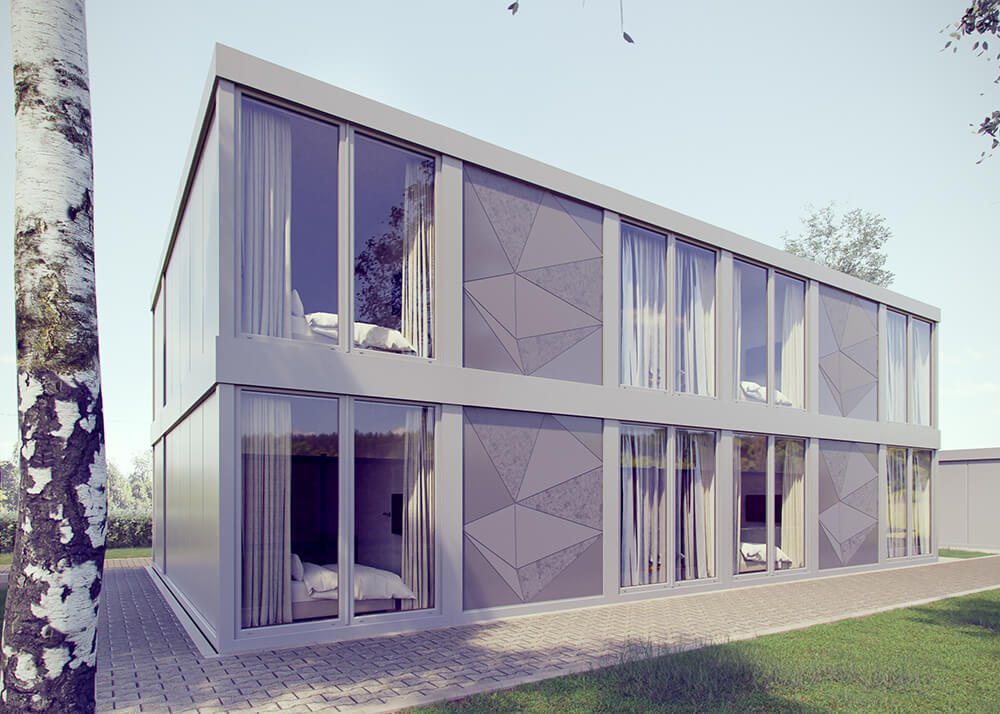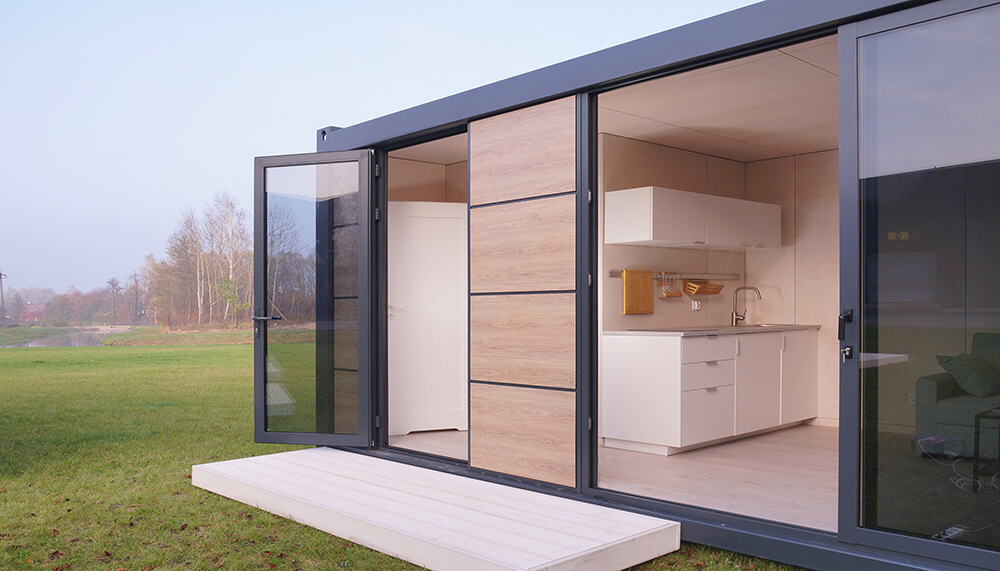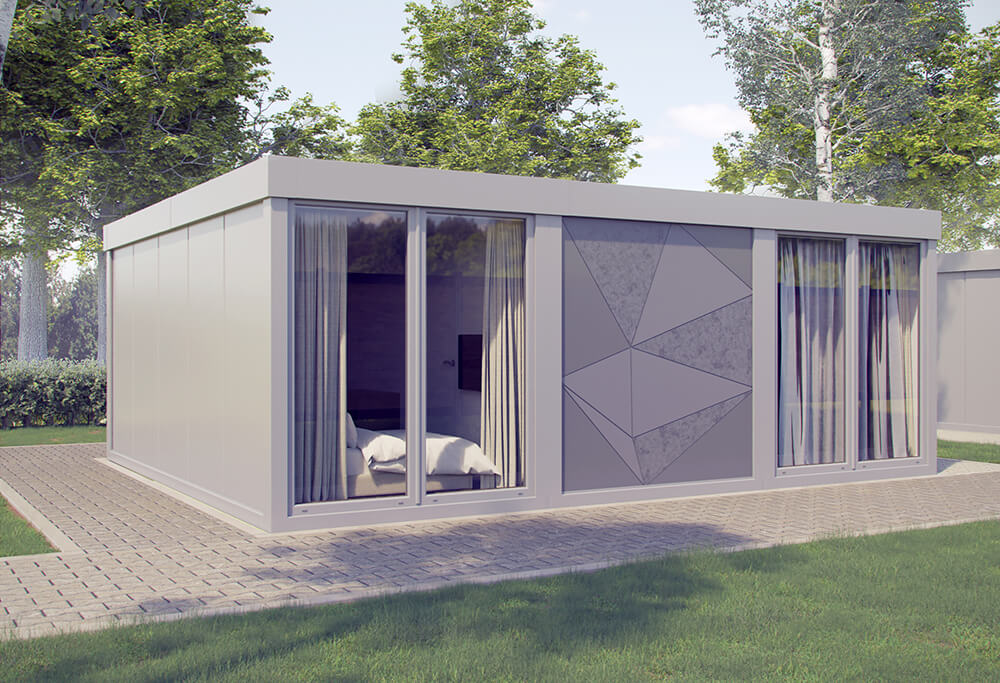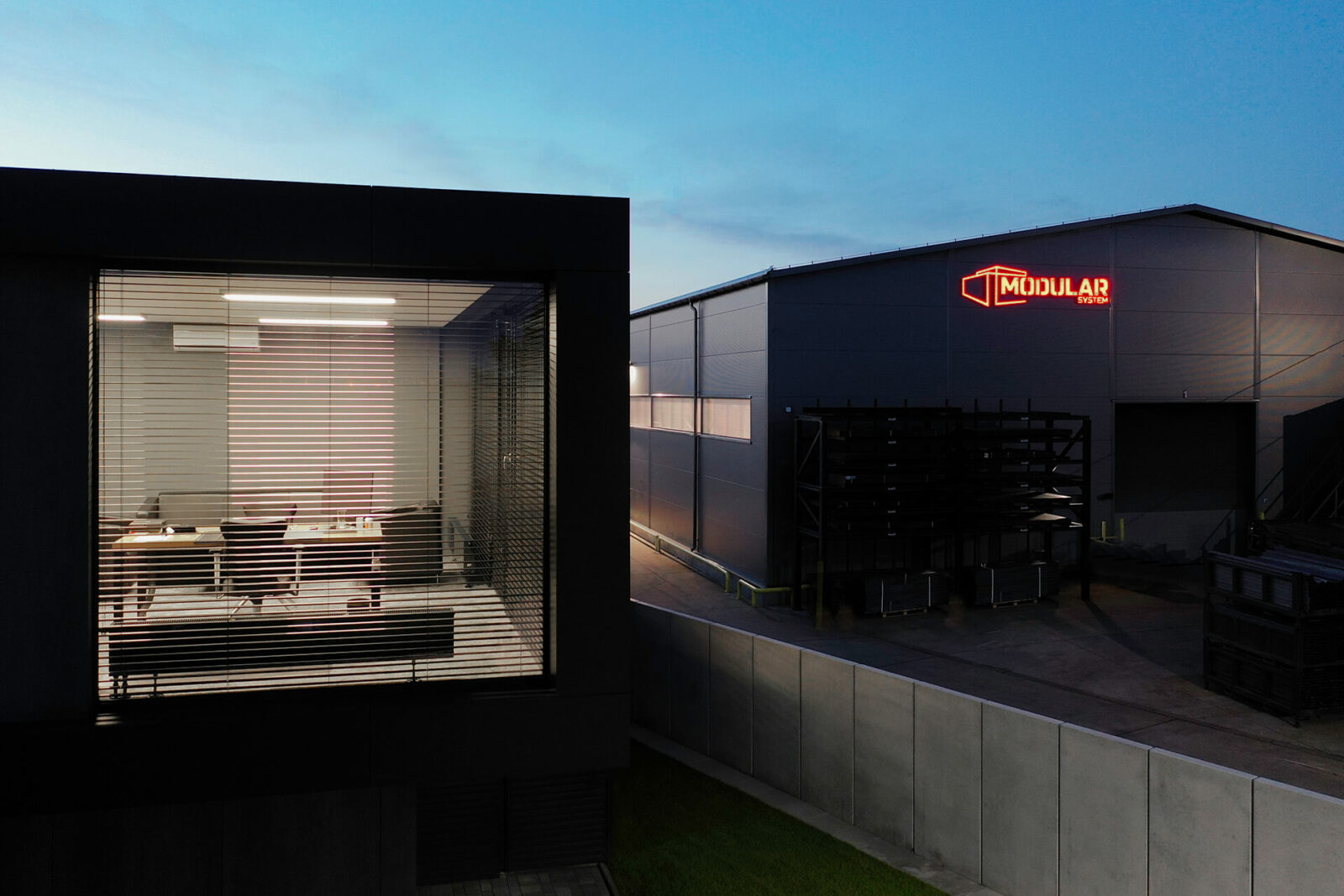Modular houses – what are they? Advantages and disadvantages of residential modular systems.
More and more people are thinking about buying a modular house which is sometimes the fastest and the simplest way to build your own house. It is also one of the best solution for people who need to move house very often because of their job. Why? And what characterise modular houses?
- Characteristics of modular houses
- Lightweight ex-clay concrete modular house and skeleton modular houses
- Portable prefabricated houses
- Advantages of all-year-round modular houses
- Disadvantages of modular houses
Characteristics of modular houses
Your skin crawls when you think about long term building of your dream house, problems connected with disciplining your workers and costs you have to bear? There is a method for that- modular houses which mean objects consisting of different segments. What does it mean in practice? This house consists of cubes with different usually standard dimensions which assembled altogether create a comfortable, functional and meeting basics needs house.
What is the most important? This kind of building is produced on a production hall but it is assembled on your building plot what usually takes a couple of days. However, you must know that there are two kinds of modular house- lightweight ex-clay concrete objects and skeleton objects.

Lightweight ex-clay concrete and skeleton modular houses
The basic construction of lightweight ex-clay concrete modular houses is steel durable frame filled with lightweight ex-clay concrete (mixture of concrete with gravelite what provides both lightness and heat absorptiveness. This kind of buildings is of course isolated and the elevation is secured in a proper way – as it is in case of a traditional house. Inner walls are usually made from gypsum fiber boards, electrical and heating installation are made. Lightweight ex-clay concrete houses are produced in a plant and the assemblage might last no more than three days. Skeleton houses are based on a steel or wooden skeleton construction. Water, drains, electrical and central heating installations are prepared. What is interesting skeleton houses can be outright residential buildings. In this case a building permission must be given. They can also be holiday cabins which are not connected to the ground. Skeleton buildings the same as lightweight ex-clay concrete buildings are made on the production hall and their assemblage might last 14 days.
Ready-made or individual projects of residential modular system?
There has been a belief that residential modular systems significantly aberrate from brick-built buildings. Moreover they are acclaimed not to be aesthetic ones. But that’s a myth – modern modular building enables to create segments which assembled altogether can remind a traditional house.
But that’s not all – a client can choose a realization of a ready-made project consisting of a few standard modules or a project completely adjusted to clients’ needs can be made. Then the same as when a standard building is built a client has a real influence how their house will finally look like.
It is possible to place an order for turnkey project or creating your own interior design because residential containers inside does not differ from a brick-built one. It is important that both ready-made and individual projects can be extended by additional segments in following years adopting the building according to your needs.

Portable prefabricated houses
It was mentioned at the beginning that prefabricated houses are a beneficial solution for people who move houses continually. It is possible because modular systems made in modern technology can be easily transported from one place to another. Moreover, segment objects can be put on the wetland, rocky or sandy areas and also on banks.

Advantages of all-year-round modular buildings
The biggest advantage of all-year-round modular buildings is the speed of realization. It takes two months from choosing project to building a house whereas building of a standard house usually takes a year (although in Poland the time is usually extended).
Moreover modular systems can be assembled no matter the season of the year or kind of land which the house is built on. They can be extended in an easy way, transported, disassembled and assembled again. The walls in this kind of houses are thinner what provides a bigger usable area than in the same size traditional house.
Disadvantages of modular houses
The biggest disadvantage of modular houses is a necessity of paying a sum of money equal to the value of an object. In case of traditional building costs are usually divided into years depending on the speed of work. There is also no possibility to decrease a price of particular materials because the user does not have an influence on choosing them.
To assemble portable residential systems a crane is needed and this requires easy access to a potential plot. If you take into consideration modular houses which are not connected to the ground indelibly a few problems with legalities can occur such as connecting to sewage system.
Although modular houses are not without drawbacks for many people it is the best alternative rather than building expensive, time-consuming, brick-built objects. That way modular building is becoming more and more popular.




